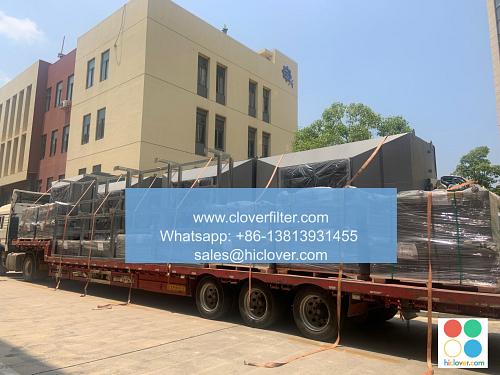The Latest Advances in Air Filter Technology for HVAC Systems

The air filter technology for Heating, Ventilation, and Air Conditioning (HVAC) systems has undergone significant advancements in recent years, with a focus on improving indoor air quality, reducing energy consumption, and minimizing maintenance costs. In this article, we will discuss the latest developments in air filter technology, highlighting various application areas and key features such as nanofiltration, UV-C lighting, and smart sensors.
Introduction to Air Filter Technology
Air filters play a crucial role in maintaining good indoor air quality by removing airborne pollutants, allergens, and bacteria from the air. Traditional air filters use fiberglass or pleated media to capture particles, but these have limitations in terms of efficiency and effectiveness. The latest air filter technologies, such as electrostatic filtration and activated carbon filtration, offer improved performance and versatility.
Key Features of Advanced Air Filter Technology
Some of the key features of advanced air filter technology include:
* Nanofiltration: This technology uses nanopores to capture particles as small as 0.01 microns, making it effective against viruses, bacteria, and volatile organic compounds (VOCs).
* UV-C lighting: This feature uses ultraviolet light to disinfect the air and inactivate microorganisms, providing an additional layer of protection against airborne pathogens.
* Smart sensors: These sensors monitor the air quality and adjust the filter’s performance in real-time, ensuring optimal filtration and minimizing energy consumption.
Application Areas for Advanced Air Filter Technology
Advanced air filter technology has a wide range of applications, including:
* Commercial buildings: Offices, hospitals, and shopping malls can benefit from improved indoor air quality and reduced energy consumption.
* Industrial settings: Manufacturing facilities, warehouses, and other industrial environments can use advanced air filters to remove hazardous particles and gases.
* Residential homes: Homeowners can improve indoor air quality and reduce allergy symptoms with advanced air filter technology.
* Transportation systems: Air filters can be used in airplanes, trains, and buses to improve air quality and reduce the spread of airborne diseases.
Benefits of Advanced Air Filter Technology
The benefits of advanced air filter technology include:
* Improved indoor air quality: Advanced air filters can remove up to 99.97% of airborne particles, including allergens, viruses, and bacteria.
* Reduced energy consumption: Smart sensors and advanced filtration technologies can minimize energy consumption and reduce costs.
* Minimized maintenance costs: Advanced air filters can be designed to be washable and reusable, reducing maintenance costs and waste.
Conclusion
In conclusion, the latest advances in air filter technology for HVAC systems offer significant improvements in indoor air quality, energy efficiency, and maintenance costs. With key features such as nanofiltration, UV-C lighting, and smart sensors, advanced air filters can be used in a wide range of applications, including commercial buildings, industrial settings, residential homes, and transportation systems. As the technology continues to evolve, we can expect to see even more innovative solutions for improving indoor air quality and reducing the environmental impact of HVAC systems. It seems like you haven’t provided a prompt for me to respond to. Please provide a question, topic, or prompt you’d like to discuss, and I’ll do my best to provide a helpful and direct answer.

